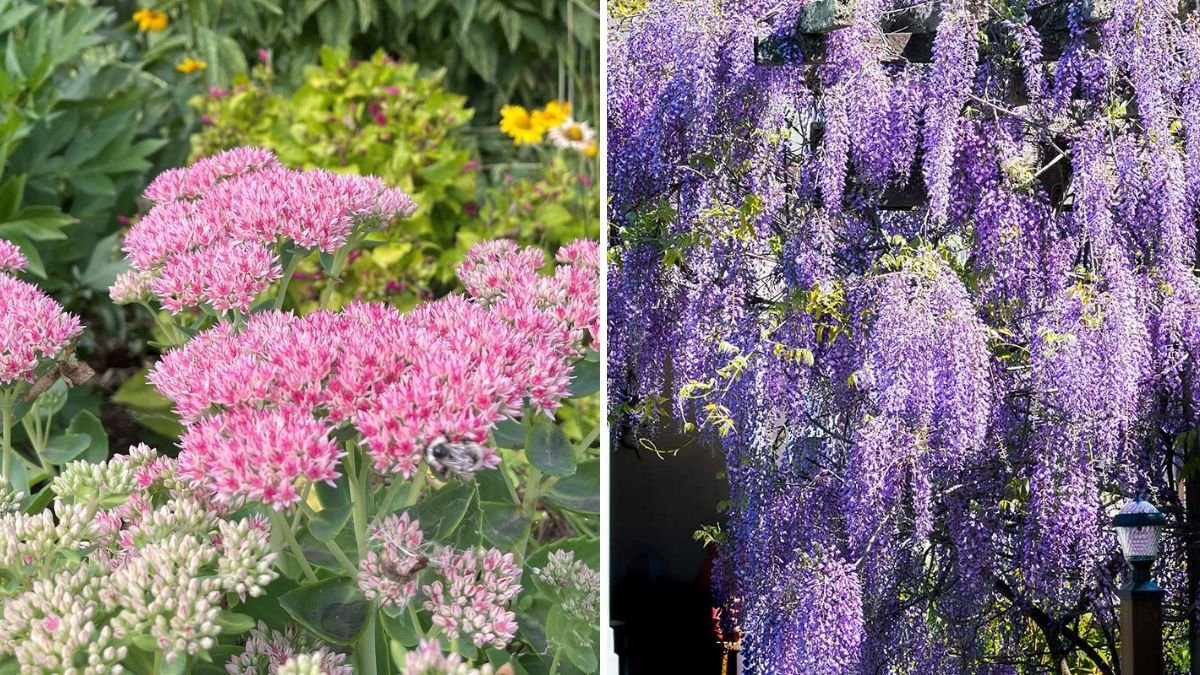Gardens exposed to coastal breezes, open fields, or high-rise terraces face a unique challenge: heavy winds. Strong gusts can damage delicate plants, break stems, and dry out foliage, making garden maintenance difficult. However, some plants are naturally hardy, flexible, and wind-resistant, making them ideal for windy locations.
This guide highlights 10 hardy plants that thrive in windy conditions, along with detailed planting, care, and design tips to create resilient and beautiful windproof gardens.
1. Ornamental Grasses (Miscanthus, Pennisetum, Festuca)
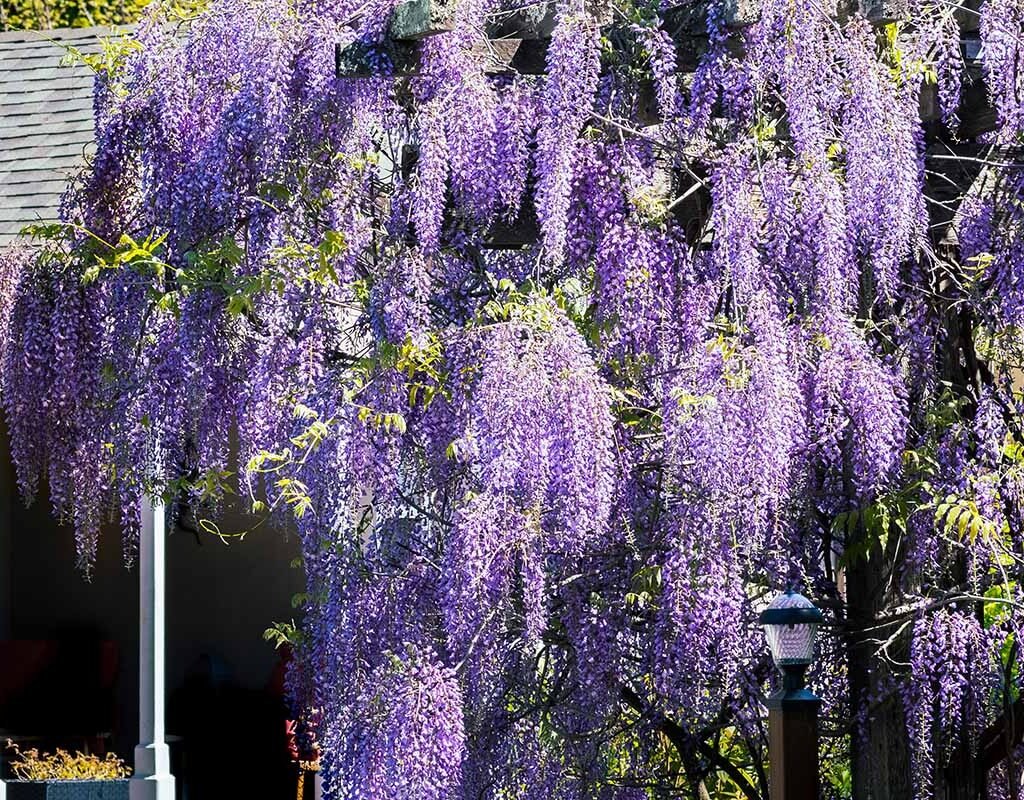
Why They Withstand Wind
- Ornamental grasses are flexible yet strong, bending rather than breaking in strong winds.
- Their narrow, arching leaves reduce wind resistance while adding movement and texture.
- Popular varieties like Miscanthus sinensis, Pennisetum alopecuroides, and Festuca glauca provide visual interest and winter structure.
Care Tips
- Sunlight: Full sun to partial shade.
- Soil: Well-draining soil; adaptable to sandy or clay soils.
- Watering: Moderate; drought-tolerant once established.
- Maintenance: Cut back old growth in late winter to encourage fresh spring shoots.
Bonus: Ornamental grasses create natural sound and privacy barriers, reducing wind impact on other plants.
2. Lavender (Lavandula spp.)
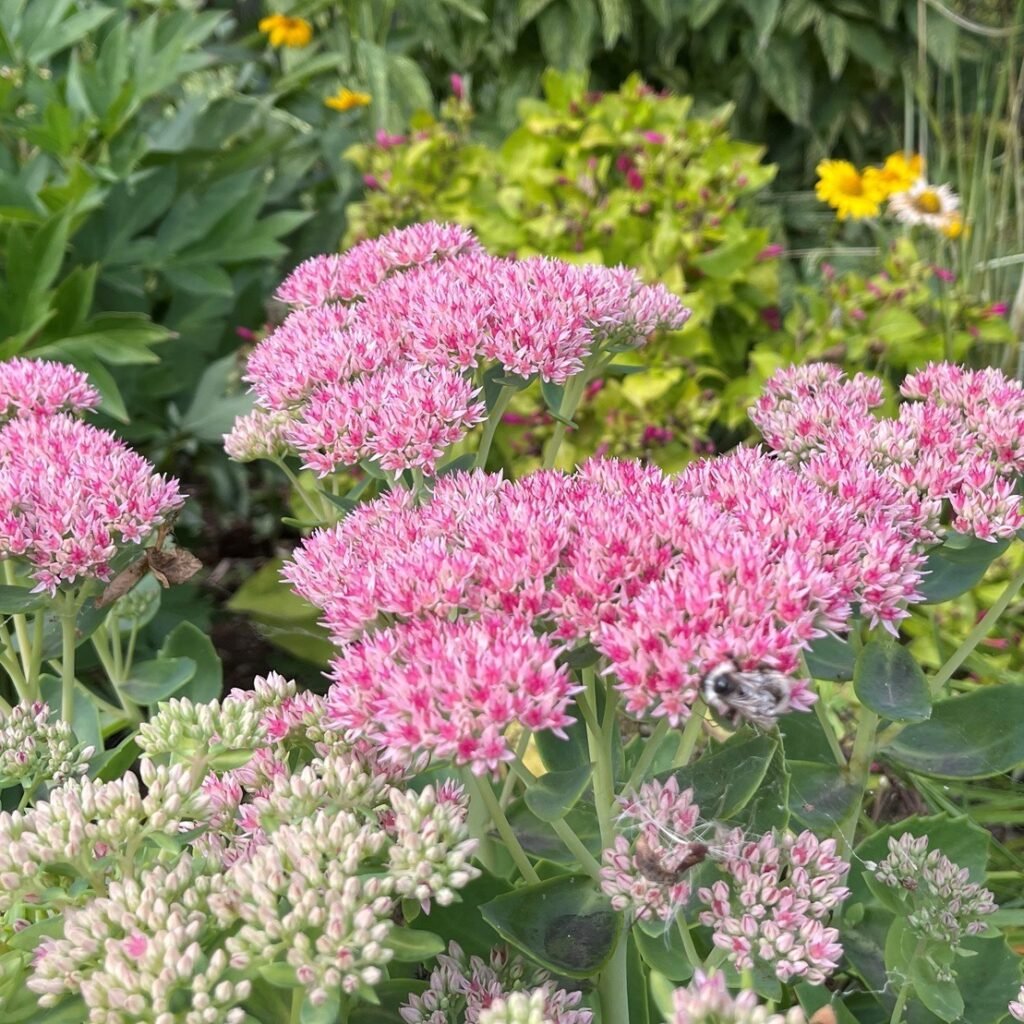
Why It Withstands Wind
- Lavender is a woody, drought-tolerant shrub with narrow leaves that resist wind damage.
- Its aromatic foliage is resilient and fragrant, adding both beauty and scent.
- Thrives in full sun and well-drained soil, perfect for exposed, windy sites.
Care Tips
- Sunlight: Full sun.
- Soil: Well-drained, sandy or rocky soil.
- Watering: Low; overwatering can damage roots.
- Maintenance: Prune lightly after flowering to maintain shape and encourage bushy growth.
Bonus: Lavender attracts pollinators while repelling some garden pests.
3. Yucca (Yucca spp.)
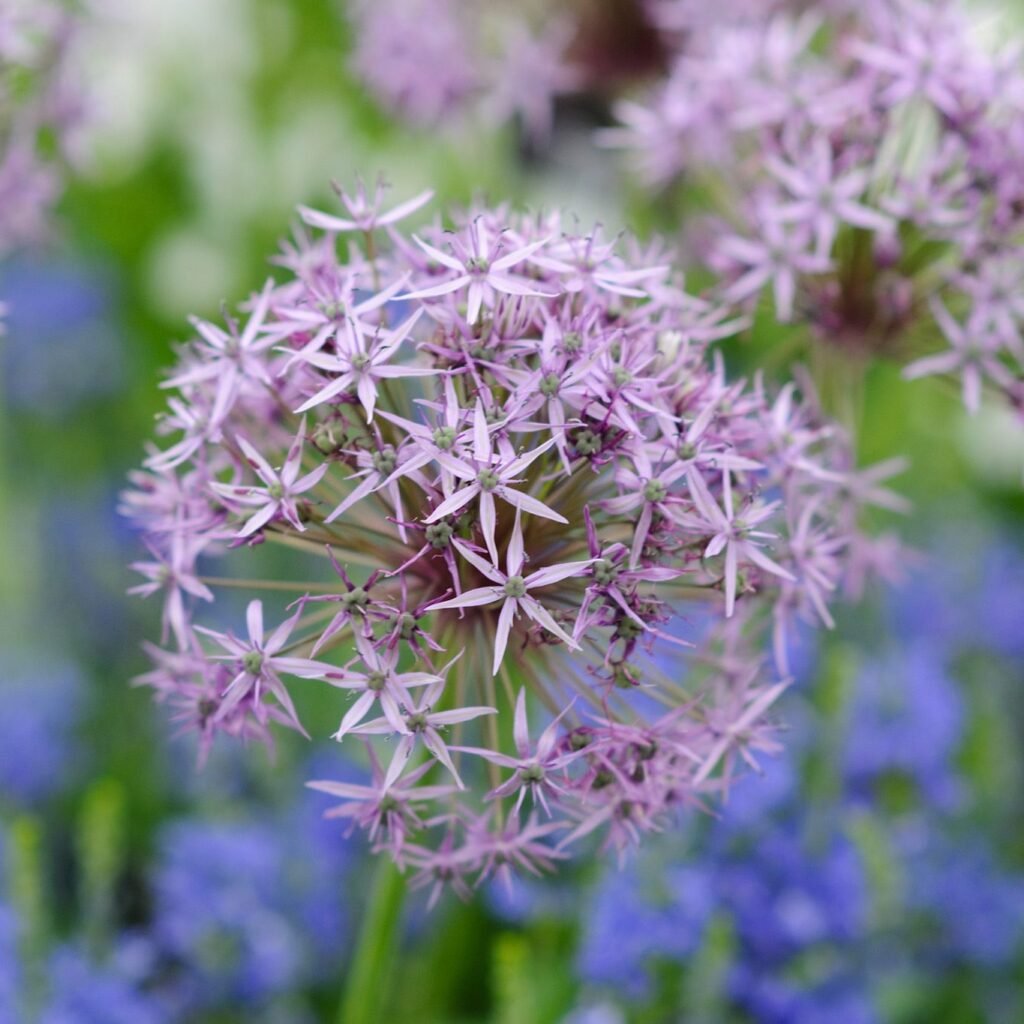
Why It Withstands Wind
- Yuccas have sturdy, stiff leaves and deep root systems that anchor them against strong gusts.
- They produce dramatic spiky foliage and tall flower spikes, adding architectural interest.
- Perfect for coastal gardens or dry, windy slopes.
Care Tips
- Sunlight: Full sun.
- Soil: Well-draining soil; tolerates poor, sandy conditions.
- Watering: Low; highly drought-tolerant.
- Maintenance: Minimal; remove old flower stalks after bloom.
Bonus: Yuccas provide low-maintenance, evergreen structure year-round.
4. Sea Holly (Eryngium spp.)
Why It Withstands Wind
- Sea Holly features spiky, steel-blue foliage and unique thistle-like flowers.
- Its tough stems and compact form resist wind damage, making it ideal for exposed areas.
- Thrives in sandy, well-draining soil, commonly used in coastal gardens.
Care Tips
- Sunlight: Full sun.
- Soil: Sandy, well-draining soil.
- Watering: Low; drought-tolerant.
- Maintenance: Remove spent flowers to maintain tidiness; cut back foliage in late fall.
Bonus: Sea Holly is pollinator-friendly, attracting bees and butterflies.
5. Juniper (Juniperus spp.)
Why It Withstands Wind
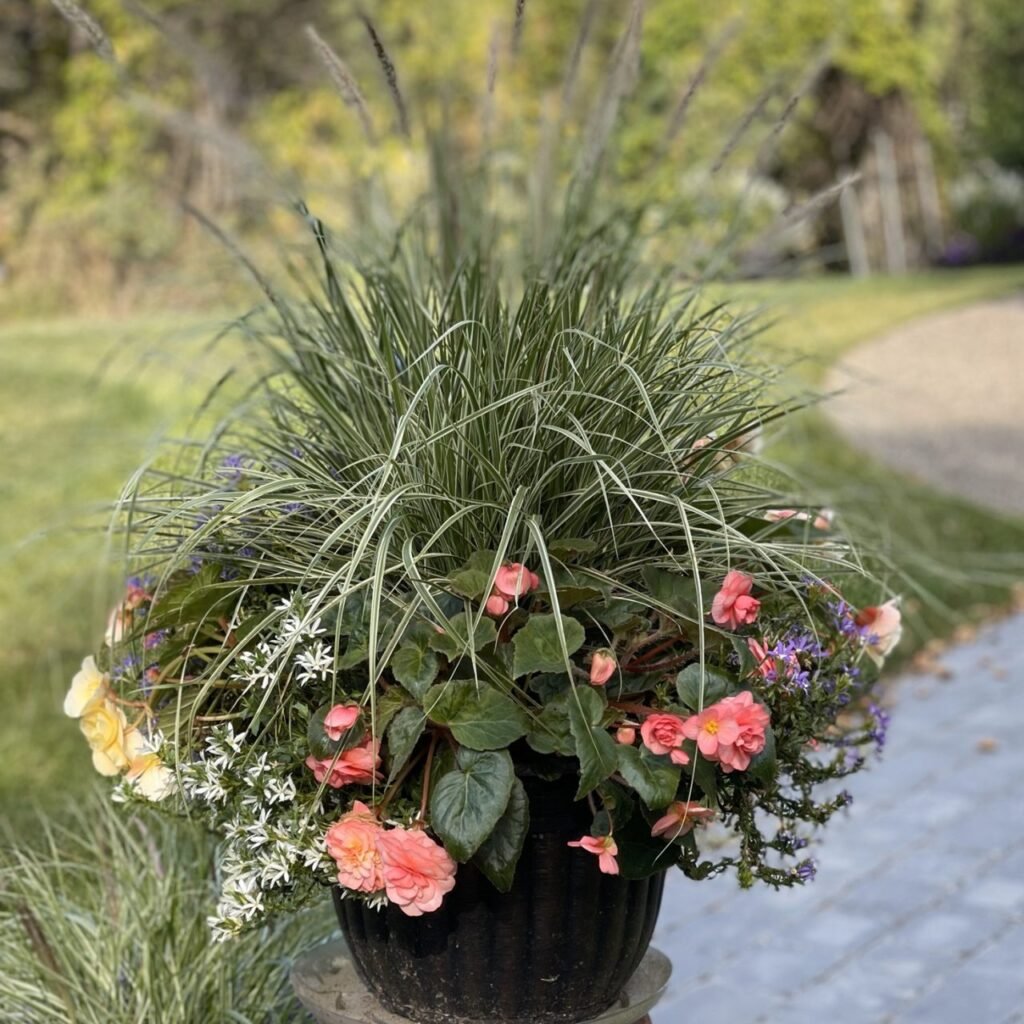
- Junipers are evergreen shrubs or groundcovers with flexible branches that resist wind damage.
- Their dense foliage provides shelter for other plants and stabilizes soil on slopes.
- Varieties include upright forms for screens and spreading forms for groundcover.
Care Tips
- Sunlight: Full sun.
- Soil: Well-draining soil; tolerant of poor, rocky, or sandy soil.
- Watering: Low; drought-tolerant once established.
- Maintenance: Minimal; prune lightly to maintain shape if desired.
Bonus: Junipers reduce wind erosion and add year-round greenery to gardens.
6. Ornamental Sedum (Stonecrop, Sedum spp.)
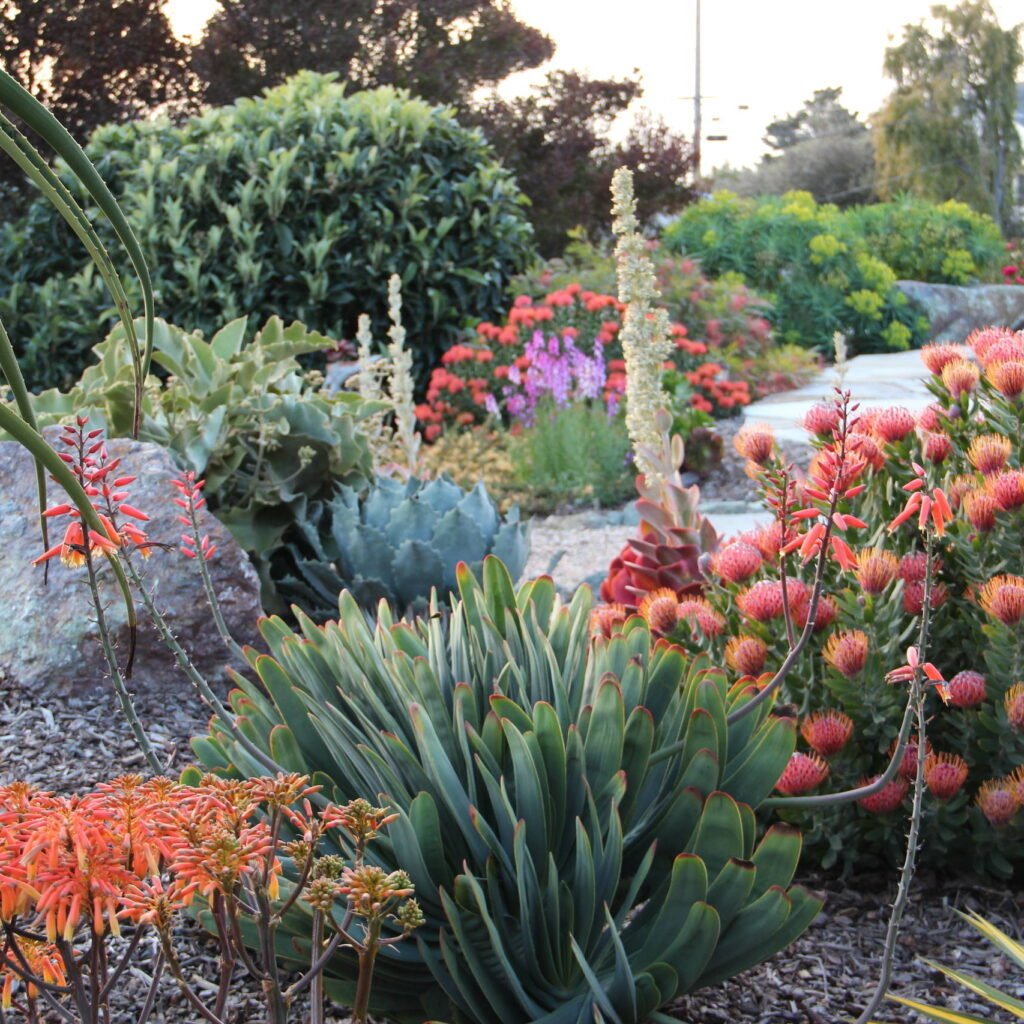
Why It Withstands Wind
- Sedums are low-growing succulents with thick, fleshy leaves that resist wind and water loss.
- Flower clusters provide late summer and fall color with minimal care.
- Excellent for rock gardens, borders, or raised beds in windy conditions.
Care Tips
- Sunlight: Full sun.
- Soil: Well-draining, sandy or rocky soil.
- Watering: Low; highly drought-tolerant.
- Maintenance: Minimal; cut back old growth in spring if desired.
Bonus: Sedums can spread to form mats, protecting soil and reducing wind erosion.
7. Boxwood (Buxus spp.)
Why It Withstands Wind
- Boxwoods are dense evergreen shrubs with flexible stems that tolerate wind stress.
- Their compact foliage makes them ideal for hedges, borders, or foundation plantings in exposed areas.
- Hardy in both coastal and inland windy sites.
Care Tips
- Sunlight: Full sun to partial shade.
- Soil: Well-draining soil.
- Watering: Moderate; established plants tolerate periods of drought.
- Maintenance: Prune for shape as needed; otherwise, low-maintenance.
Bonus: Boxwoods provide year-round structure and privacy in windy gardens.
8. Hellebores (Helleborus spp.)
Why It Withstands Wind
- Hellebores, or Lenten roses, are shade-tolerant perennials with tough foliage and early blooms.
- Their leathery leaves and downward-facing flowers resist wind and frost.
- Excellent for partially shaded, windy garden beds.
Care Tips
- Sunlight: Partial to full shade.
- Soil: Moist, well-draining soil; rich in organic matter.
- Watering: Moderate; drought-tolerant once established.
- Maintenance: Remove old leaves in late winter to highlight new growth.
Bonus: Hellebores bloom in late winter to early spring, providing early garden color.
9. Grasses and Bamboo (Fargesia spp.)
Why They Withstand Wind
- Clumping bamboos like Fargesia and tall ornamental grasses are flexible, resilient, and fast-growing, perfect for wind protection.
- They create living screens and windbreaks without requiring fences.
- Bamboo stems and grass blades bend under pressure rather than snapping, making them extremely wind-tolerant.
Care Tips
- Sunlight: Partial to full sun depending on species.
- Soil: Moist, well-draining soil.
- Watering: Moderate; bamboos need consistent moisture, especially when young.
- Maintenance: Trim old or damaged culms; divide clumps as needed.
Bonus: They provide privacy, sound buffering, and movement, enhancing garden ambiance.
10. Coastal Roses (Rosa rugosa)
Why They Withstand Wind
- Rugosa roses are tough, salt-tolerant shrubs originally from coastal regions.
- Their flexible canes resist wind damage while producing fragrant flowers and edible hips.
- Hardy in poor, sandy soils, making them perfect for windswept gardens or seaside landscapes.
Care Tips
- Sunlight: Full sun.
- Soil: Well-draining soil; tolerates sandy or slightly salty conditions.
- Watering: Moderate; drought-tolerant once established.
- Maintenance: Prune lightly after flowering; remove damaged canes to encourage growth.
Bonus: Rugosa roses provide winter interest with colorful hips and are low-maintenance compared to hybrid roses.
Tips for Gardening in Windy Locations
- Group Plants Strategically: Use tall, sturdy plants like grasses, bamboo, or yucca as natural windbreaks for smaller, sensitive plants.
- Plant in Clumps: Wind-resistant plants perform better in clusters, where stems support each other.
- Use Mulch: Mulching helps retain soil moisture and reduces erosion in exposed gardens.
- Choose Flexible Plants: Plants with thin, narrow, or leathery leaves bend rather than break under wind stress.
- Anchor Shallow Roots: Wind can uproot young plants; choose species with deep or fibrous root systems for stability.
- Reduce Water Stress: Wind accelerates evaporation; ensure established plants receive adequate water during dry spells.
Conclusion: Build a Windproof Garden with Hardy Plants
Gardens in windy locations don’t need to be barren or unmanageable. By planting Ornamental Grasses, Lavender, Yucca, Sea Holly, Juniper, Sedum, Boxwood, Hellebores, Bamboo, and Rugosa Roses, gardeners can enjoy resilient, attractive, and low-maintenance landscapes.
These hardy plants not only withstand gusty conditions but also enhance garden beauty, attract wildlife, and stabilize soil, making them ideal choices for coastal areas, exposed terraces, or open fields.
By understanding each plant’s sunlight, soil, and water preferences, and strategically grouping wind-tolerant species, even the windiest garden can become a thriving, colorful, and sustainable outdoor space. With these hardy plants, strong winds no longer pose a threat—they become an opportunity to showcase movement, texture, and resilience in your garden.
